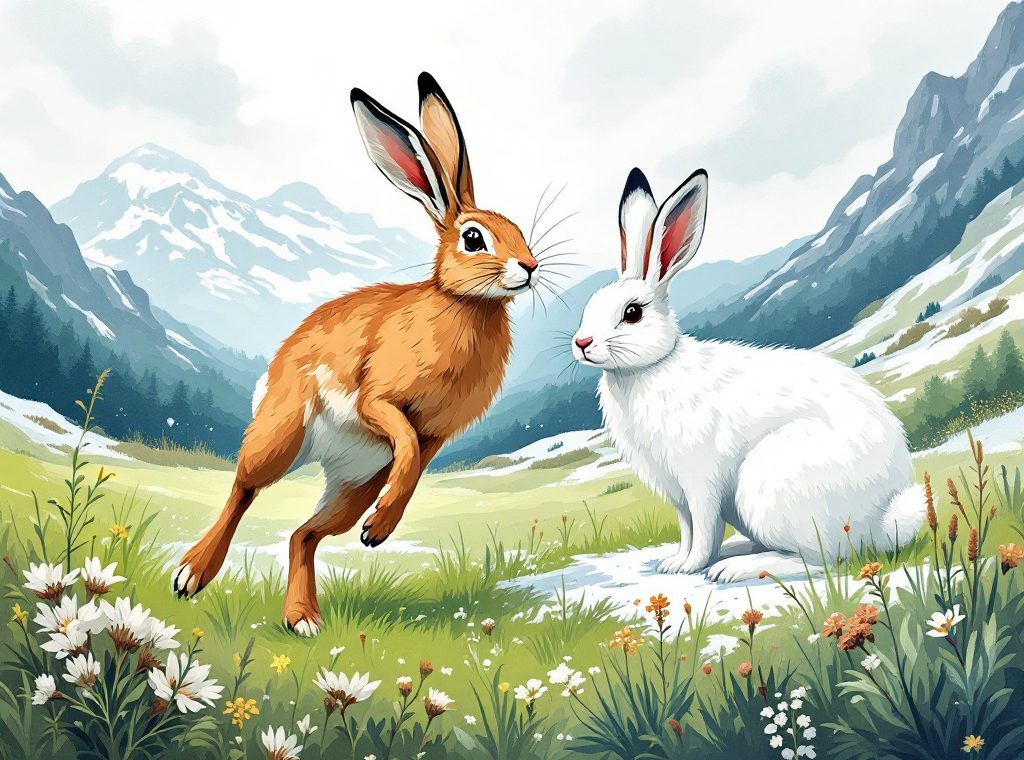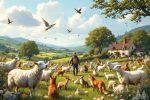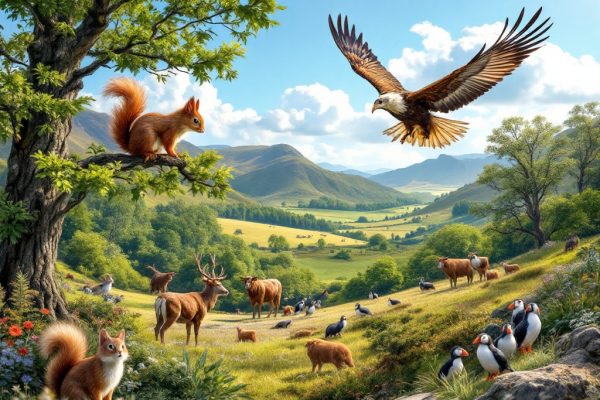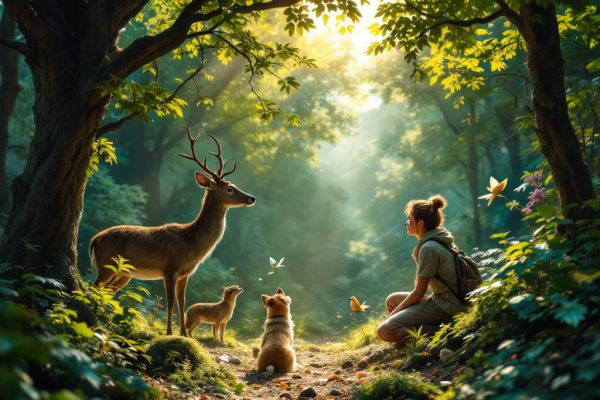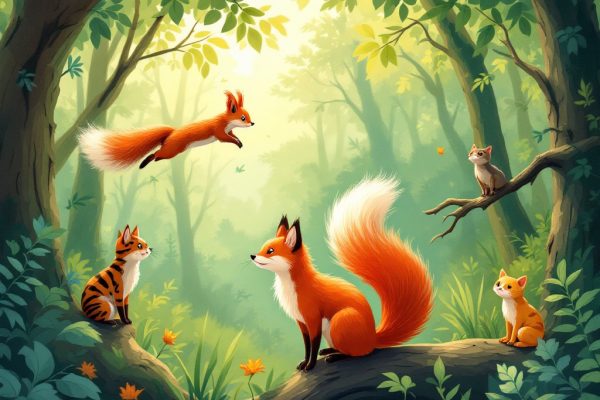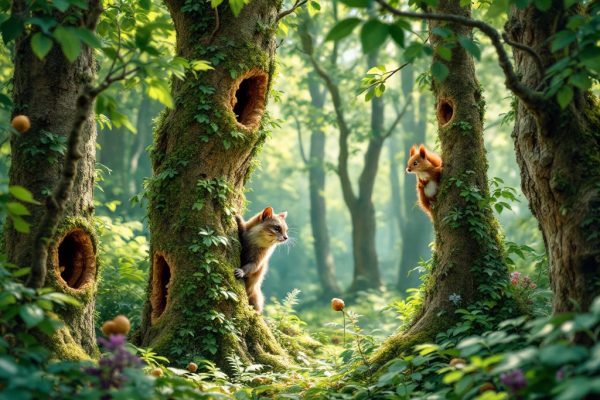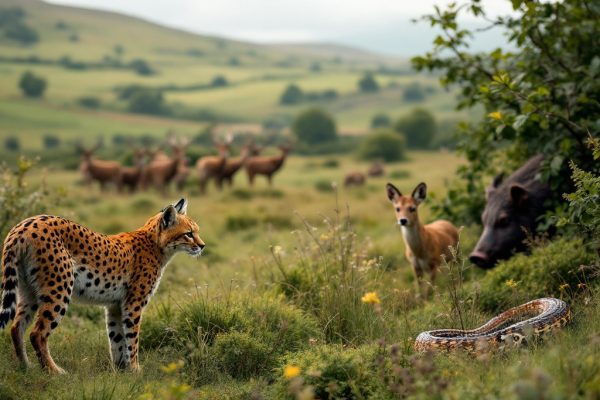Top Lothian Wild Animals with Floppy Ears
Discover the fascinating world of Lothian’s floppy-eared wildlife! From the nimble brown hare sprinting across meadows at 45 mph to the expertly camouflaged mountain hare blending seamlessly with the snowy Highlands, explore the unique adaptations and vital roles these creatures play in the local ecosystem. Learn how their remarkable ears aid in survival, from detecting predators to regulating body temperature. But these charming animals face growing threats. Delve into the conservation efforts underway to protect them and discover how you can contribute to ensuring their future in Lothian. Read on to uncover the secrets of these captivating creatures and join the fight for their survival.
Important information
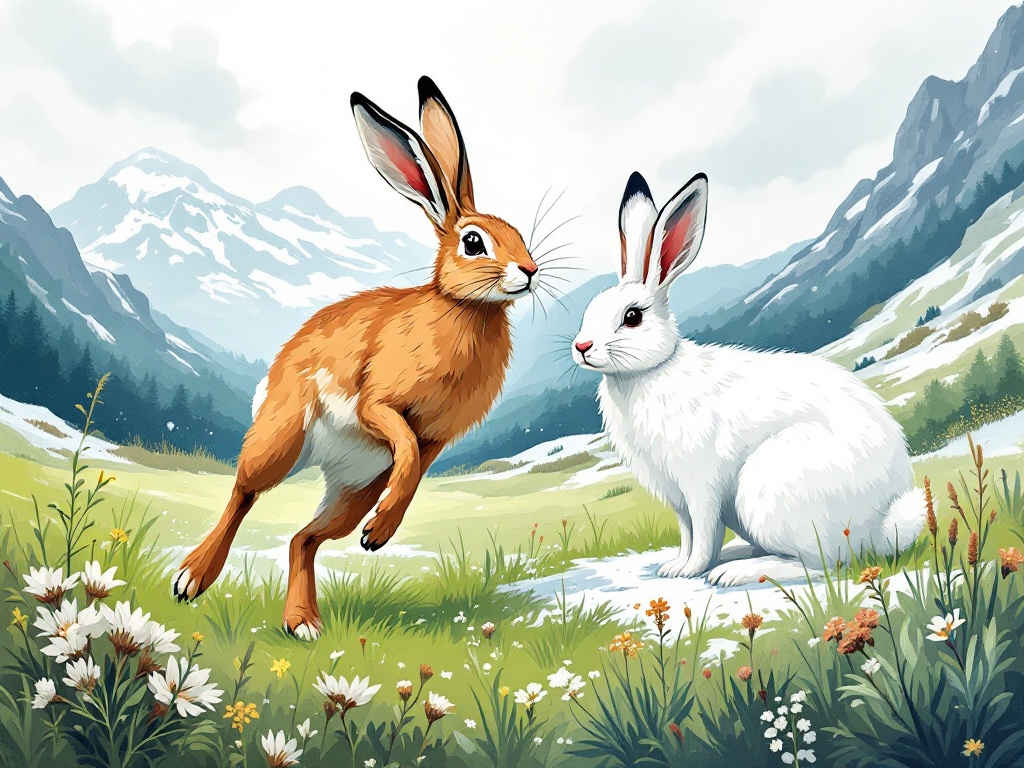
- Lothian hosts various floppy-eared animals, including rabbits, hares (both brown and mountain), and some deer.
- Large, floppy ears aid these animals in detecting predators, regulating body temperature (thermoregulation), and communicating.
- Brown hares thrive in Lothian’s lowlands, relying on speed and camouflage for survival, while mountain hares inhabit upland areas and change their coat to white in winter for camouflage.
- Habitat loss, predation by foxes and domestic pets, and climate change threaten Lothian’s floppy-eared wildlife.
- Local conservation efforts focus on habitat restoration, public education, and population monitoring to protect these vulnerable species.
Top Lothian Wild Animals with Floppy Ears
Lothian is home to a variety of wildlife, especially those known for their distinctive floppy ears. Rabbits, hares, and even some deer species, all possessing these remarkable features, can be found in diverse habitats ranging from meadows and woodlands to urban areas. These ears serve crucial purposes, playing vital roles in both predator detection and thermoregulation.
Rabbits
Rabbits, commonly found in meadows, use their large ears for two main purposes: cooling their bodies and amplifying sounds. This heightened auditory sense helps them detect potential predators, ensuring their survival in the open environment.
Hares
Brown hares, characterized by their even longer ears compared to rabbits, prefer grasslands. Mountain hares, adapted to the upland terrain, also inhabit the region. Both species contribute significantly to Lothian’s vibrant ecosystem.
Characteristics of Floppy-Eared Animals
Large, floppy ears offer crucial survival advantages for animals like rabbits and hares. The large ear surface area helps regulate body temperature, which is especially important in warmer climates. Their flexible ears provide exceptional hearing, allowing them to detect high-pitched sounds often inaudible to other animals. This heightened sensitivity is essential for locating food and evading predators such as foxes. These adaptations are key to their survival in diverse and challenging environments.
Importance of Floppy Ears in Wildlife
Floppy ears provide animals with several key advantages. They improve the detection of predators and prey, giving animals a crucial survival edge. They also aid in thermoregulation by efficiently dissipating excess heat. Furthermore, floppy ears are essential for communication, expressing a wide spectrum of emotions and social signals through subtle movements and positional changes.
Brown Hare: A Common Sight in Lothian
Lothian’s fields and meadows are teeming with brown hares. Their long legs give them a speed advantage, easily outpacing predators. Their coats blend seamlessly with the environment, displaying a mix of brown and white. These largely solitary creatures thrive in Lothian’s open terrain—fields, meadows, and grasslands—where they find both sustenance and refuge. As crepuscular animals, they are most active during the dim light of dawn and dusk.
Unlike their mountain-dwelling cousins, who turn white in winter, brown hares retain their brown coat year-round. They are also distinguishable by their longer ears and hind legs, preferring the lowlands while mountain hares inhabit higher elevations.
Habitat and Behavior of Brown Hares
Lothian’s open landscapes, including grasslands, meadows, and farmlands, provide the ideal habitat for the brown hare. These herbivores primarily graze on grasses, herbs, and crops. For daytime rest and refuge from predators, they rely on shallow depressions called forms. These forms offer excellent camouflage. Renowned for their distinctive bounding gait, brown hares can achieve remarkable speeds of up to 45 mph.
Comparison with Mountain Hares
Mountain hares are masters of disguise, blending seamlessly into their mountainous and rocky habitats. This camouflage protects them from predators like foxes and eagles. Their camouflage is further enhanced by seasonal coat changes, turning white in winter and brown in summer. This allows them to disappear into their environment.
- Habitat: mountainous and rocky,
- Predators: foxes, eagles,
- Coat: changes seasonally (white in winter, brown in summer).
Brown hares, on the other hand, rely on speed and agility to escape danger. They retain a mostly brown coat year-round, making them more vulnerable compared to the mountain hare.
- Defense mechanism: speed and agility,
- Coat: mostly brown year-round,
- Vulnerability: higher due to less effective camouflage.
Mountain Hare: Adaptation and Camouflage
Mountain hares are masters of disguise, their fur changing with the seasons. In summer, their grayish-brown coat camouflages them against rocks and vegetation. Come winter, their fur transforms to a brilliant white, blending with the snow. This seasonal change is crucial for survival in snowy regions like the Scottish Highlands, helping them evade predators such as foxes and eagles.
This winter white coat makes mountain hares almost invisible against the snow, a vital defense in harsh environments. The white fur is essential for their survival.
Mountain Hare
- Habitat: upland areas.
- Coat: changes to white in winter.
Brown Hare
- Habitat: lowland areas.
- Coat: remains brown year-round, with slight seasonal variations.
Expert Camouflage Techniques
Mountain hares are masters of camouflage, their fur changing color with the seasons. Their grayish-brown coat conceals them amongst rocks and vegetation during summer. Come winter, their fur transforms to white, seamlessly blending with the snowy Highlands landscape. This seasonal change is vital for survival, protecting them from predators such as foxes and eagles, even in exposed terrain.
Differences Between Mountain and Brown Hares
Mountain Hare
Mountain hares flourish in upland habitats and display a white coat in winter. They are generally solitary animals. Physically, they are smaller than brown hares, with shorter ears and hind legs.
Brown Hare
Brown hares reside in lowland areas and maintain their brown fur year-round. They exhibit gregarious behavior, often gathering in groups. A key distinguishing feature is their black-tipped tail.
Conservation Efforts for Floppy-Eared Wildlife in Lothian
Lothian’s wildlife faces severe threats from habitat loss driven by urbanization and expanding agriculture. Predation by foxes and domestic pets adds another layer of danger. Furthermore, climate change, with its warmer winters, disrupts breeding cycles, creating new challenges for these vulnerable species.
Threats
- habitat loss due to urbanization and agricultural expansion,
- predation by foxes and domestic pets,
- climate change disrupting breeding cycles.
Conservation Efforts
- habitat restoration and creation,
- protection of existing grasslands and woodlands,
- public education on responsible pet ownership,
- population monitoring to guide future conservation.
Challenges Facing These Species
Urban sprawl and intensive agriculture decimate natural habitats, shrinking both living spaces and food sources for wildlife.
Climate change further complicates survival by disrupting breeding cycles and impacting food availability.
The introduction of invasive species adds another layer of pressure, increasing competition for resources and threatening native animals.
Local Conservation Initiatives
Across Lothian, local groups are dedicated to protecting floppy-eared creatures like hares and rabbits. Their work includes habitat restoration and educating the community about these charming animals. Population monitoring is essential, and collaborating with local communities is key to establishing sustainable practices that ensure these vulnerable species thrive. These combined initiatives are making a significant positive impact.

